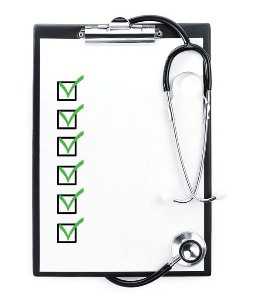医疗错误事后问题清单可避免重蹈覆辙
2012-06-07 不详 网络
埃默里大学的Kimberly D. Manning博士和格雷迪纪念医院的Neil H. Winawer博士在医院医学会(SHM)年会上报告称,医疗错误的阴影或许会使我们长期处于不良情绪中,但也可能成为医院团队的宝贵教训。应将处理不良事件视为学习机会,不妨从一份简短的问题清单开始。 她们设计了一种可用于评估个人在不良事件和医疗错误中所承担责任的标准问题清单,旨在阐明做对了什么、哪些

埃默里大学的Kimberly D. Manning博士和格雷迪纪念医院的Neil H. Winawer博士在医院医学会(SHM)年会上报告称,医疗错误的阴影或许会使我们长期处于不良情绪中,但也可能成为医院团队的宝贵教训。应将处理不良事件视为学习机会,不妨从一份简短的问题清单开始。
她们设计了一种可用于评估个人在不良事件和医疗错误中所承担责任的标准问题清单,旨在阐明做对了什么、哪些方面本应做得更好,以及如何采取措施应对将来可能出现的类似问题。Winawer博士指出,采取标准化处理方法应对医疗错误,目的在于在对不良事件进行分析时更多考虑个人责任。并非所有错误均源于制度本身,应在无过失制度文化与责任之间寻找平衡点。Manning博士补充说,并非所有不良事件均需制度改变,有时可能只需要与你的团队或独自审视到底发生了什么事情,以便汲取教训和继续前进。
该清单包括一系列必答问题:描述不良结局或关键事件,解释做了(或未做)哪些对患者并非理想的处置,以及思考所做的哪些处置对患者有益。Manning博士说道,最重要的是考虑问题出现前后所提供的高质量医疗服务,而不是仅纠结于不良事件本身。
问题清单还关注未来:询问医生可以采取哪些不同的做法,从中吸取了哪些教训,以及将来采取什么保障措施避免类似问题发生。Manning博士和Winawer博士解释道,目标是使问题得以终结,但更重要的是尊重患者。
为帮助医生处理与不良事件相关的复杂情绪问题,该问题清单还包括了一些随访问题,目的是除认识到医疗失误是可以讨论和应对之外,还应避免医生情绪抑郁和身心疲惫。
该清单可用于某位医生,也可用于治疗团队。但切记,治疗团队中不同成员的责任不同,对同一事件的看法也可能不同。有时,团队中的实习医生竭尽全力做每件事情,而资历更深的医生本应多做些事情。鉴于许多不良事件是由同事发现的,因此该清单也为问题讨论和最大程度减少尴尬局面提供了一种客观的方法。
缅因州班戈市阿卡迪亚医院首席医疗官、精神病医生Anthony T. Ng博士同意上述观点。“当我们医院开展零失误活动时,我同许多同事一样,认为这是一个很好的主意。”这将有助于降低发病率和死亡率,提高患者及其家属的满意度,更不用说提高医生的斗志。但他指出,对这样的活动也存在某些顾虑。“一旦发生错误,可能非常棘手,特别是当自己牵扯其中时。我们觉得我们辜负了患者,甚至对不起自己。”医生会深感愧疚,这一感觉可能来自对未来不良结局和惩罚措施的恐惧。责备可能导致“治疗团队极度紧张”并有可能伤及团队和协作工作环境。
Ng博士指出,问题清单将有助于医生更有条理地分析错误原因。“有些医生可能与患者进行坦诚沟通并为错误道歉,其他医生或许更关注细节并且更多地自我批评,另外一些医生可能采取防御式医疗行为以确保不再重复同样错误,尽管未来临床情况可能大不相同。拥有相互支持的同事和建设性的工作氛围,通常有助于我们以团队方式以及与患者合作共同处理错误。”
The aftermath of a medical error can be an endless tangle of bad feelings, or it can yield valuable lessons for hospital teams.
Adverse events need to be approached as learning opportunities, and a short checklist can start the process, according to Dr. Kimberly D. Manning of Emory University, Atlanta.
She and her colleague Dr. Neil H. Winawer have developed a standardized list of questions for assessing one’s role in adverse events and medical errors. The checklist gets at what went right, what could have been done better, and how to approach similar situations differently in the future.
Taking a standardized approach to medical errors is aimed at bringing more personal accountability into the analysis of adverse events, said Dr. Winawer, director of the hospital medicine unit at Grady Memorial Hospital, Atlanta. “Not every mistake has its origins inside of a system, and there needs to a balance of a no-fault systems culture and accountability,” he said.
Dr. Manning added that not every adverse event requires a systems change. “Sometimes it just involves ... sitting down with your team, or alone, and working through exactly what happened to get the lessons and move forward,” she said.
The checklist includes a series of must-ask questions, starting with a description of the adverse outcome or pivotal event. Other questions elicit explanations of what the physician did (or did not do) that was not ideal for the patient. And the checklist asks physicians to think about what they did that was good for the patient.
“What we found from having these discussions with our house staff is that the patients we tend to feel the most terrible about are usually the people that we’ve invested a lot into,” said Dr. Manning, who is the director of Emory’s transitional year residency program.
It’s important to think about all the high-quality care that was provided, before and after something went wrong, rather than just dwelling on the adverse event, she said.
The checklist also focuses on the future, asking physicians what they could have done differently, what they have learned from the situation, and what safeguards could be implemented to avoid a similar outcome going forward.
The goal is to provide closure, but even more importantly, to honor the patient, Dr. Manning and Dr. Winawer explained.
To help physicians deal with the complex emotions surrounding an adverse event, the checklist includes some follow-up questions. The idea, Dr. Manning said, is to avoid the depression and burnout that can result unless perceived errors in care are discussed and dealt with.
The checklist can be used by individuals or with colleagues as a group. But it’s important to keep in mind that different members of the care team have different levels of responsibility and may have different views about the same event. Sometimes, the intern on the team did everything that he or she could do, Dr. Manning said, but the more senior physician could have done more to help the patient.
Because many adverse events are discovered by colleagues, the checklist also offers an objective way to discuss the problem and minimize some of the awkwardness.
Dr. Anthony T. Ng agreed. “When my hospital embarked on a zero-defect campaign, I (like many of my colleagues) thought it was a great idea,” he said. It would help reduce morbidity and mortality and increase patient and family satisfaction, not to mention provider morale. However, he noted that the campaign involved some trepidation. “When errors occur, they can be tough – especially if we were part of the error. We feel that we have failed our patients, and perhaps even ourselves,” he noted. Physicians may experience guilt, which can be compounded by fear of future adverse outcomes, fear of punitive actions from superiors, and even fear of malpractice or board actions for mistakes, if they are significant. The blame game can cause “extreme tension for the treatment team” and be potentially toxic to a collegial and collaborative work environment.
Dr. Ng said that a checklist would help clinicians analyze what led to the defect “in a more organized way.” Some physicians may have frank conversations with the affected patients and apologize for the mistakes. Others may become more detail oriented and may be even more critical of themselves. Some may practice defensive medicine to ensure that they do not repeat the same mistakes, even though the future clinical scenarios may be very different. Having supportive colleagues and a constructive work environment “often help us deal with errors in a collegial manner, as well as in partnership with patients,” said Dr. Ng, who is a psychiatrist and chief medical officer at Acadia Hospital in Bangor, Maine. The most important thing to appreciate is that “the goal of zero defects is a process that involves commitment and ongoing, open, and honest dialogue” – not only between providers and the administration, but also among providers and the patients and their families.
Dr. Manning and Dr. Winawer spoke at the annual meeting of the Society of Hospital Medicine.
本网站所有内容来源注明为“梅斯医学”或“MedSci原创”的文字、图片和音视频资料,版权均属于梅斯医学所有。非经授权,任何媒体、网站或个人不得转载,授权转载时须注明来源为“梅斯医学”。其它来源的文章系转载文章,或“梅斯号”自媒体发布的文章,仅系出于传递更多信息之目的,本站仅负责审核内容合规,其内容不代表本站立场,本站不负责内容的准确性和版权。如果存在侵权、或不希望被转载的媒体或个人可与我们联系,我们将立即进行删除处理。
在此留言







